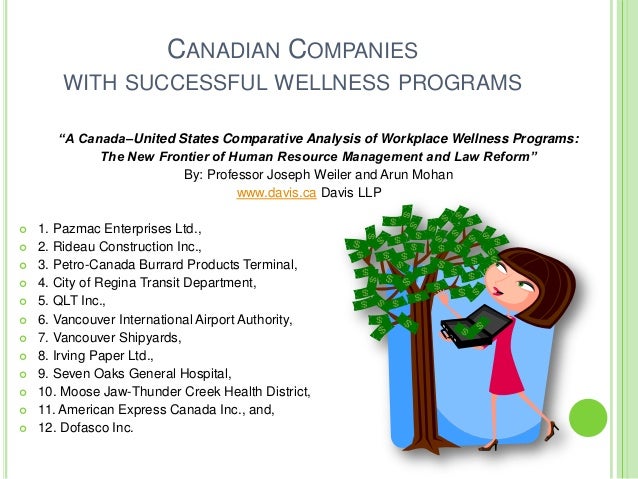Workplace Wellness Programs Statistics Canada
- Corporate Wellness Program Statistics
- Examples Of Workplace Wellness Programs
- Health And Wellness Programs In The Workplace
How Healthy Are Canadian Workers?Health and wellness programs for the workplace are not just for big companies, and are not just “employee perks”.
Corporate Wellness Program Statistics
Workplace wellness is under scrutiny. What’s the truth here? Can wellness programs help employers reduce out-of-control health care costs? The answer, most emphatically, is yes. But we must first go beyond unduly narrow interpretations of ROI (i.e., “claims ROI”), to understand how properly designed wellness programs can help employers lower health care costs while providing other types of cost savings and competitive advantages.The current ROI debate has focused on whether one type of wellness program, lifestyle management (diet, exercise, and lifestyle changes), can reduce health care claims and lead to lower costs. Here, I agree with critics that lifestyle-focused programs do not significantly lower claims costs.But, the real question is not whether wellness programs deliver returns. Rather, it’s what type of wellness program can reduce claims and thereby lower insurance premiums.

Examples Of Workplace Wellness Programs
The answer is not lifestyle programs; it’s programs that prevent at-risk employees from becoming ill and help chronically ill employees stabilize their conditions.A recent Rand study,?, examined 10 years of data from a Fortune 100 employer’s wellness program. When compared against the lifestyle-management component, disease management delivered 86% of the hard health care cost savings, generating $136 in savings per member, per month and a 30% reduction in hospital admissions.At-risk employees suffer from factors like overweight, blood pressure, diabetes, and depression, which can lead to costly (and avoidable) health claims. At-risk people should be identified through personal health assessments and biometric testing, and encouraged — not coerced — to participate in personalized care-management programs to minimize their chances of becoming chronically ill.While keeping at-risk employees healthy is critical, the shorter-term workplace-wellness ROI lies with the chronically ill, who suffer from costly conditions like advanced diabetes, heart conditions, and cancer. Different types of gypsum board. In a typical population, they consume at least 50% of a company’s claims expense, and focusing on them can make or break your claims ROI.Enrolling the chronically ill in disease-management programs that ensure they get appropriate care has the most potential to reduce insurance premiums.
Health And Wellness Programs In The Workplace
For example, a program that preempts 25 unnecessary emergency department visits can easily save $50,000, while preventing four inpatient stays can save at least $100,000. Savings like these are not unrealistic for a 2,000-employee company.Employee buy-in is key. But employers must first realize that they cannot make employees live healthier lifestyles. Incentives have a place, but they can’t single handedly drive long-term lifestyle change. And thinly veiled penalties hurt morale when viewed as a stealth form of shifting more costs onto employees and do not contribute to a supportive workplace environment, much less long-term wellness.For all of this to work, employees must trust the program and the employer’s motives, which requires visible CEO leadership.